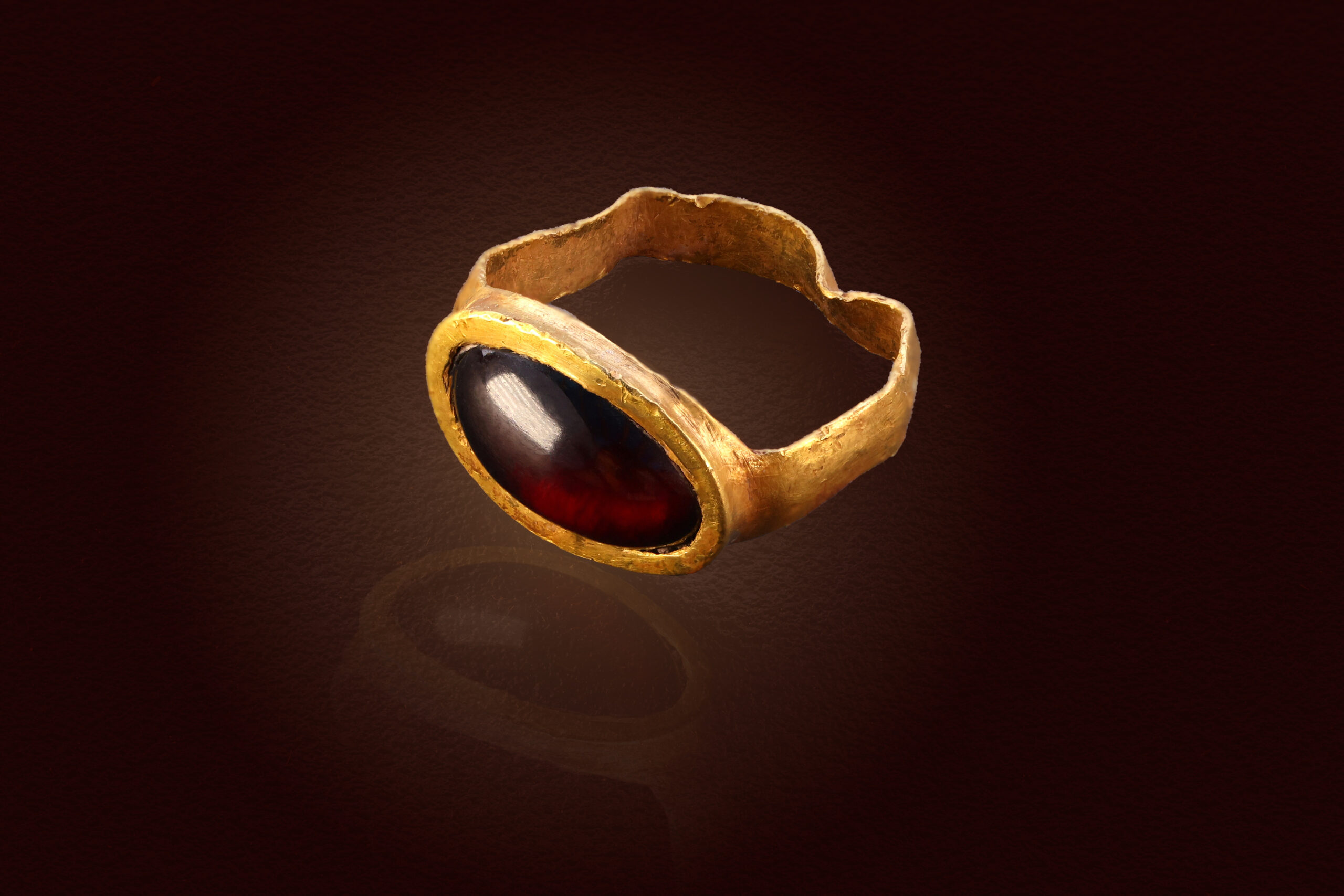JERUSALEM – Archaeologists have unearthed a 2,300-year-old gold ring set with a red gemstone during excavations in the City of David, marking the second such discovery from the same site within a year.
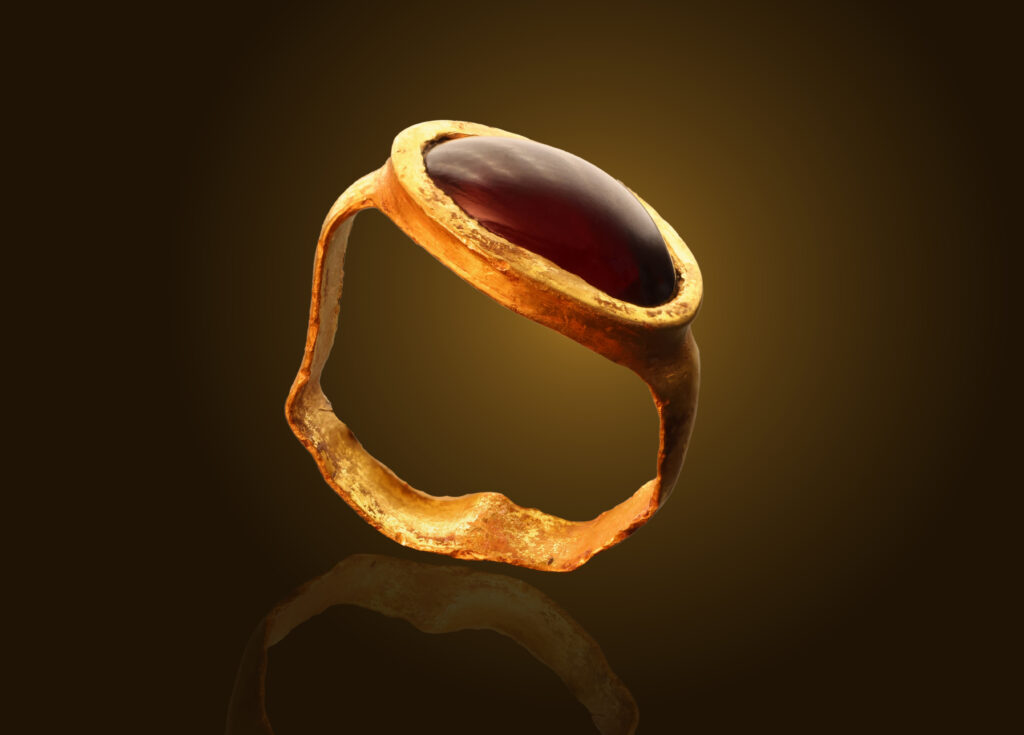
The find, dating to the Early Hellenistic period (late 3rd or early 2nd century BCE), was discovered by excavation workers during a joint project conducted by the Israel Antiquities Authority and Tel Aviv University in the Jerusalem Walls National Park.
“We sifted the dirt through a sieve, right near the excavation area, and suddenly Ben, who works with me, pulls a gold ring out of the dirt,” recounted Rivka Lengler, a City of David excavator present at the discovery. Initially mistaken for a modern item, experts quickly identified it as an ancient artifact.
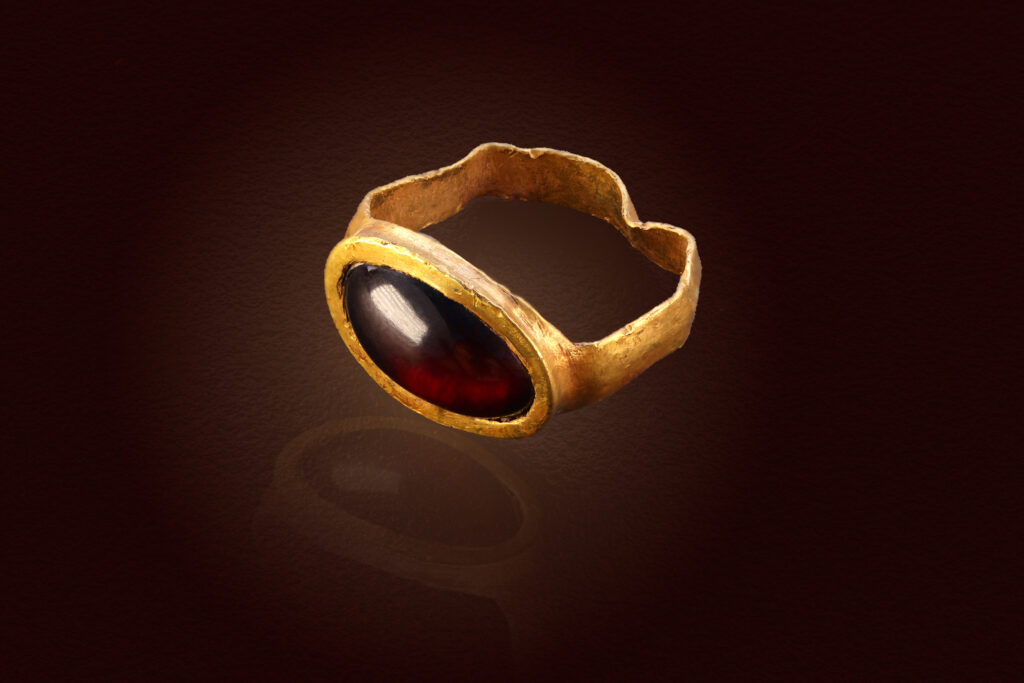
The ring’s diminutive size suggests it likely belonged to a child or adolescent living in Jerusalem during the Second Temple period. Researchers believe the jewelry may have been deliberately buried as part of a significant cultural practice.
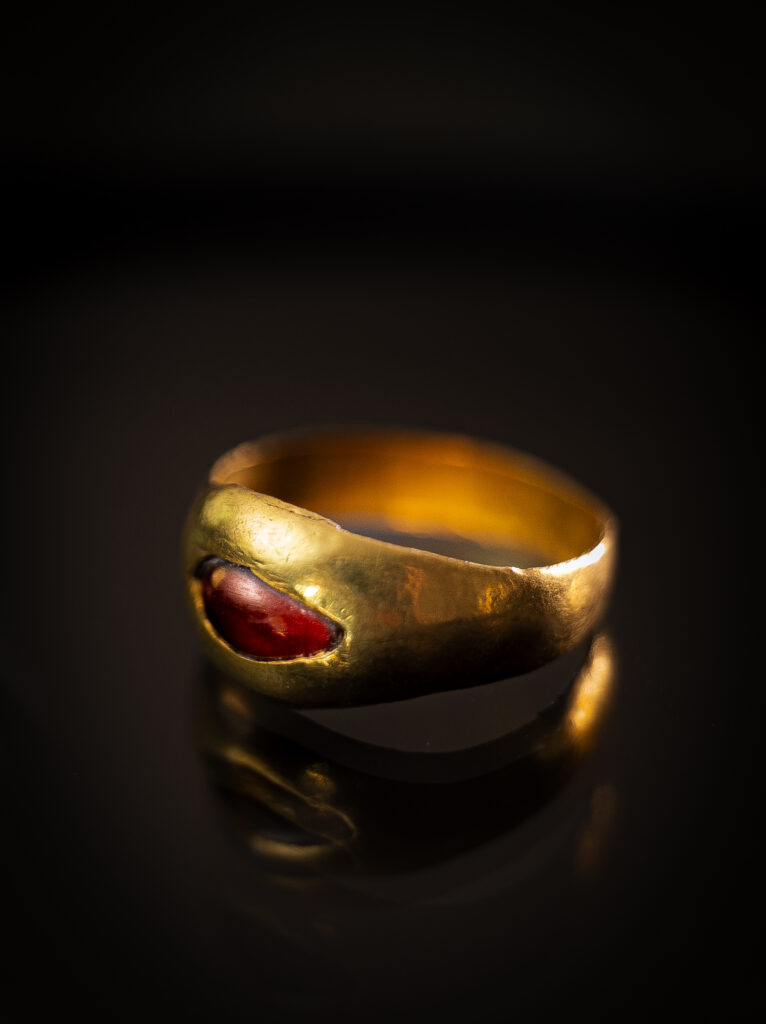
The first gold ring found less than a year ago. Photo: Asaf Pery City of David
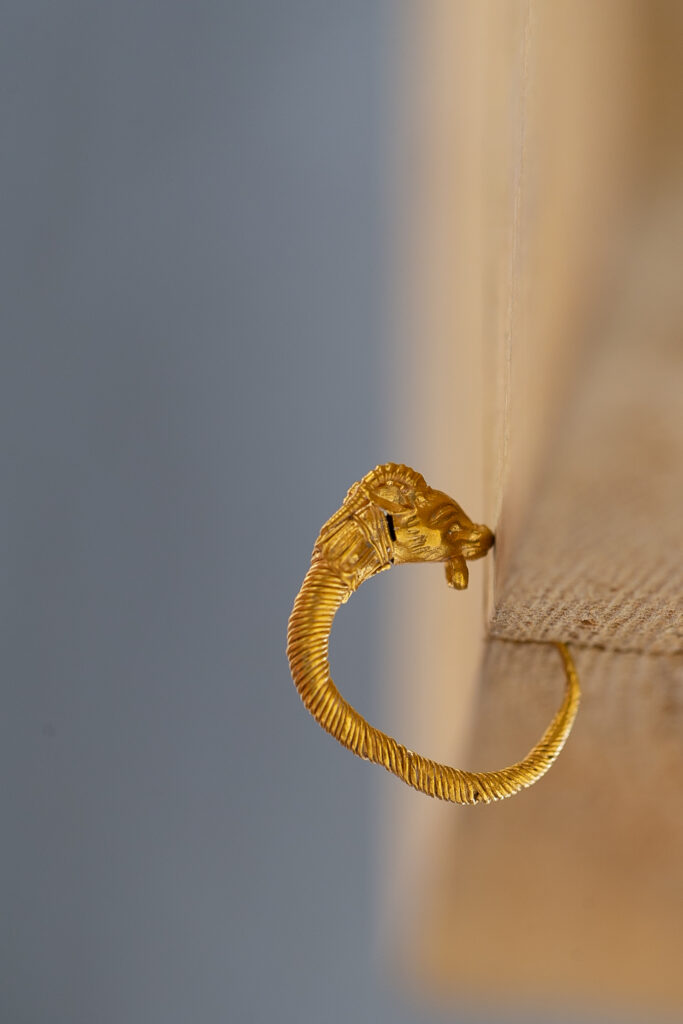
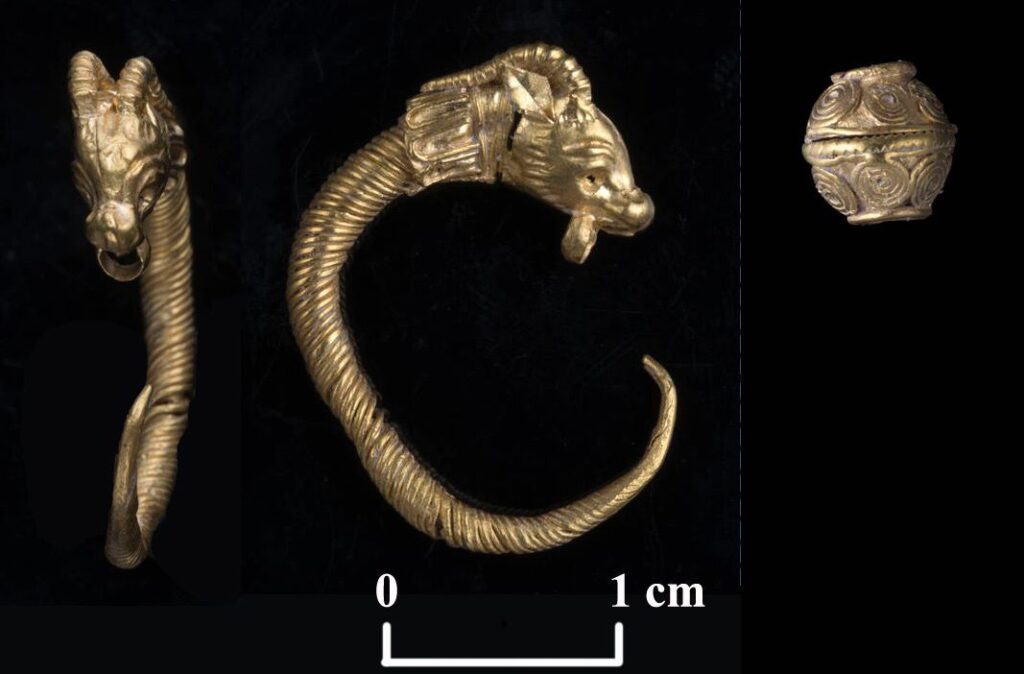
“The jewelry found in the building’s foundations was possibly buried in the context of executing a well-known Hellenistic period custom,” explained Dr. Marion Zindel, who conducted research on the ring. “Betrothed women would bury jewelry and other childhood objects in house foundations as a symbol of the transition from childhood to adulthood.”
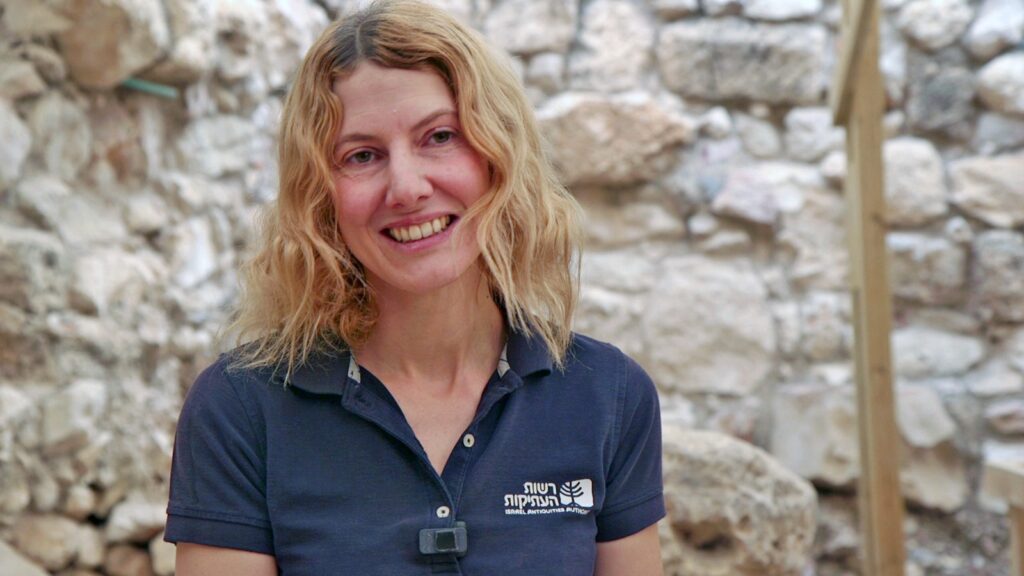
Dr. Marion Zindel. Photo: Emil Aladjem, Israel Antiquities Authority
According to excavation managers Dr. Yiftah Shalev, Dr. Marion Zindel, Efrat Bocher, and Prof. Yuval Gadot, multiple jewelry pieces have been recovered from the same archaeological layer, including bronze earrings, a gold earring decorated with a horned animal image, and a decorated gold bead.
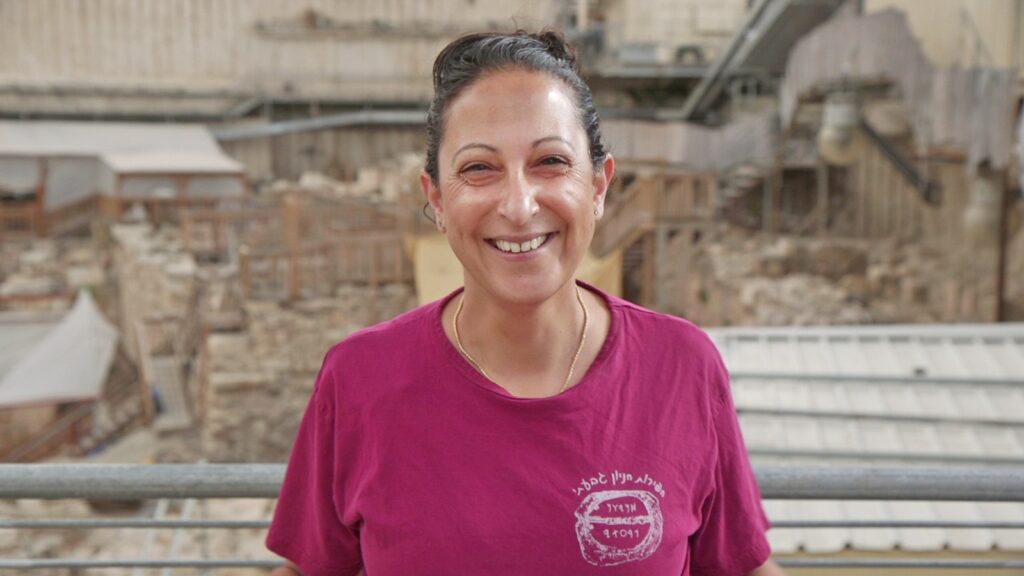
Efrat Bocher. Photo: Emil Aladjem, Israel Antiquities Authority
The artifacts were discovered beneath the floors of a large building whose construction indicates its occupants’ considerable wealth. The combination of gold with colored gemstones, such as the garnet in this ring, reflects fashion influences from Eastern regions like India and Persia—trade connections established following Alexander the Great’s conquests.
“This is the first time that we have found in Jerusalem such a large assemblage of gold jewelry from that period,” noted Efrat Bocher. “This displayed wealth is very rare in any archaeological layer and attests to the high standard of living of Jerusalem’s residents during this period.”
Eli Escusido, Director of the Israel Antiquities Authority, called the discovery “tangible evidence of the wealth, beauty and importance of Jerusalem even thousands of years ago,” adding that it transforms “Jerusalem of Gold” from poetic imagery into “historical facts uncovered right under our feet.”
The excavation is funded by the Elad Association, with findings being made accessible to the public through the Israel Antiquities Authority’s ongoing archaeological research in Jerusalem.



